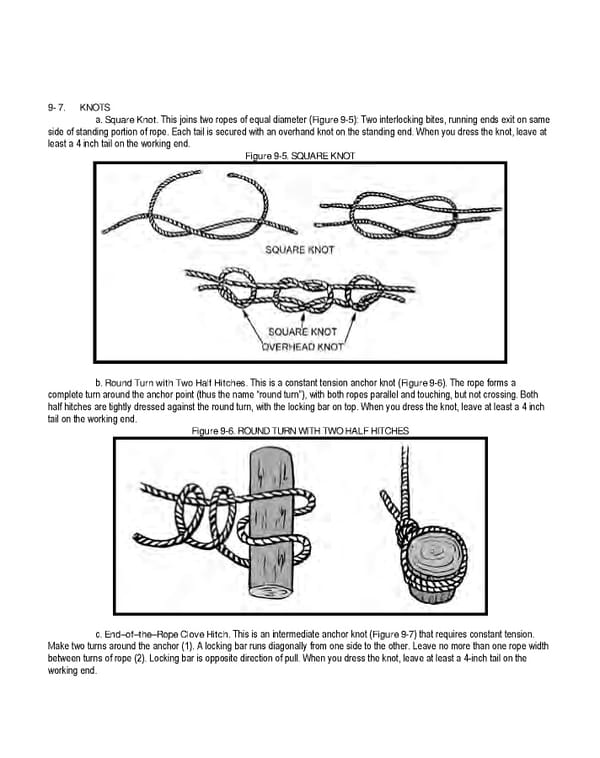9- 7. KNOTS a. Square Knot. This joins two ropes of equal diameter (Figure 9-5): Two interlocking bites, running ends exit on same side of standing portion of rope. Each tail is secured with an overhand knot on the standing end. When you dress the knot, leave at least a 4 inch tail on the working end. Figure 9-5. SQUARE KNOT b. Round Turn with Two Half Hitches. This is a constant tension anchor knot (Figure 9-6). The rope forms a complete turn around the anchor point (thus the name “round turn”), with both ropes parallel and touching, but not crossing. Both half hitches are tightly dressed against the round turn, with the locking bar on top. When you dress the knot, leave at least a 4 inch tail on the working end. Figure 9-6. ROUND TURN WITH TWO HALF HITCHES c. End–of–the–Rope Clove Hitch. This is an intermediate anchor knot (Figure 9-7) that requires constant tension. Make two turns around the anchor (1). A locking bar runs diagonally from one side to the other. Leave no more than one rope width between turns of rope (2). Locking bar is opposite direction of pull. When you dress the knot, leave at least a 4-inch tail on the working end.
 Ranger Handbook Page 175 Page 177
Ranger Handbook Page 175 Page 177